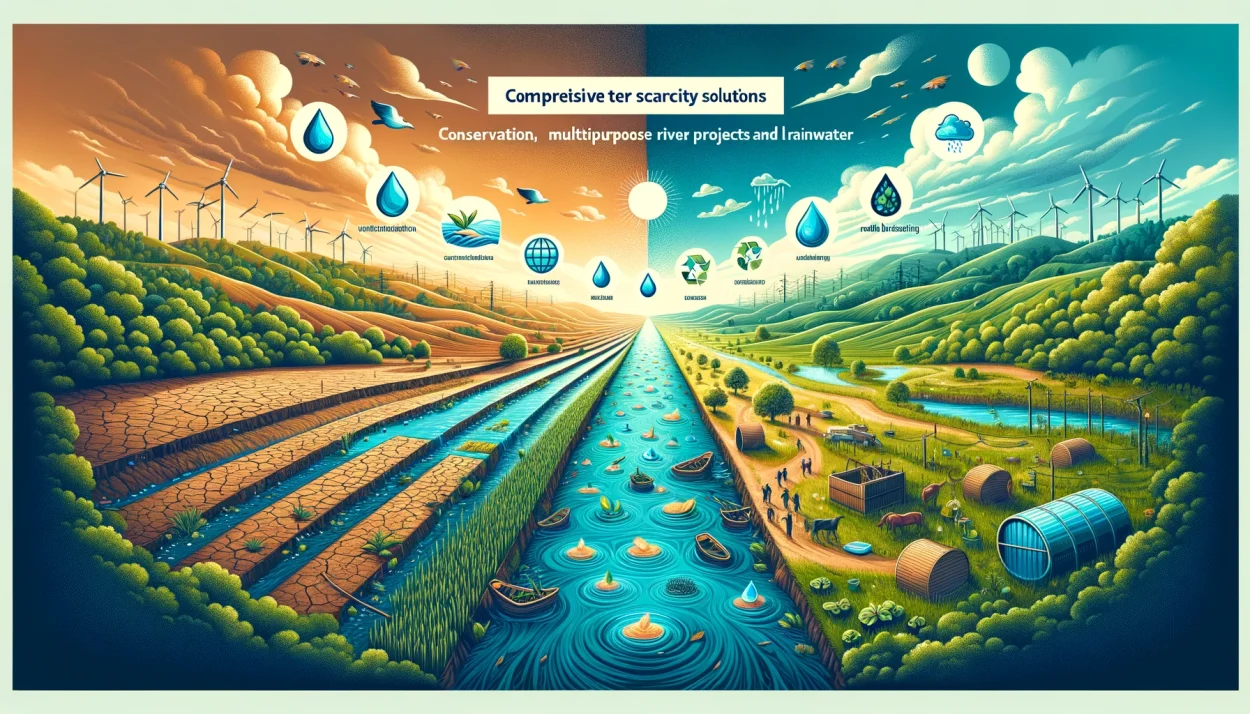
“Comprehensive Guide to Water Scarcity Solutions: Conservation, Multipurpose River Projects, and Rainwater Harvesting Insights”

Water Resources: Understanding Scarcity, Conservation, and Sustainable Management
In an era where water scarcity poses a critical challenge to sustainable development, understanding and implementing strategies for water conservation and management is imperative. This comprehensive guide explores the facets of water scarcity, highlights the significance of multipurpose river projects, delves into integrated water resources management, and underscores the importance of rainwater harvesting, particularly focusing on the context provided by the NCERT curriculum for class 10 social science.
Water Scarcity and the Need for Water Conservation and Management
Water scarcity affects more than 40% of the global population, a figure that is projected to rise. It is not just a problem of physical availability but also one of access, driven by various factors including but not limited to geographical, political, economic, and environmental changes. The burgeoning human population, increasing agricultural and industrial demands, and environmental degradation exacerbate this scarcity.
Conservation and efficient management of water resources are pivotal to combating water scarcity. They involve a spectrum of strategies, from simple daily conservation practices to advanced technological solutions, aimed at ensuring the sustainable use of water.
Multipurpose River Projects and Integrated Water Resources Management (IWRM)
Multipurpose river projects and dams are engineered to serve various objectives—irrigation, hydroelectric power generation, water supply for domestic and industrial uses, flood control, navigation, and recreation. These projects often spark debates concerning ecological and social impacts versus economic benefits. The challenge lies in balancing these diverse needs and outcomes.
Integrated Water Resources Management (IWRM) offers a framework for managing water resources in a comprehensive and sustainable manner. It promotes coordinated development and management of water, land, and related resources to maximize economic and social welfare without compromising the sustainability of vital ecosystems. IWRM principles emphasize a participatory approach, involving users, planners, and policymakers at all levels.
Rainwater Harvesting: A Sustainable Solution
Rainwater harvesting, the process of collecting and storing rainwater for reuse before it reaches the ground, is a sustainable and efficient method of augmenting water sources, particularly in regions facing acute water scarcity. It can significantly contribute to water security, reduce dependence on groundwater and surface water, and mitigate urban flooding.
The practice of rainwater harvesting can be traced back centuries but has gained renewed importance in modern water conservation efforts. Techniques vary from simple rain barrels collecting water from rooftops to more complex systems designed for large-scale collection, storage, and recharge of groundwater.
Conclusion
Water scarcity is a daunting challenge that calls for an integrated approach to conservation and management. Multipurpose river projects, while beneficial, require careful consideration of their ecological and social impacts. Integrated Water Resources Management and rainwater harvesting emerge as key strategies in the sustainable management of water resources, ensuring availability for future generations. The emphasis on these approaches in the class 10 NCERT curriculum underlines their importance in shaping young minds to understand, value, and actively participate in water conservation efforts, marking a step towards sustainable development and environmental stewardship.